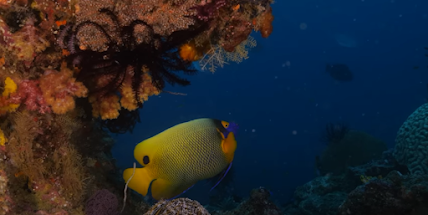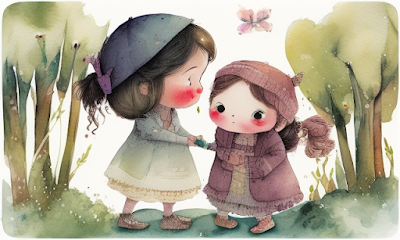In this article, I aim to present a brief overview of STEM education, outlining the guiding principles for implementing STEM, different STEM practices, the three approaches to integrated STEM, and additional guidelines. Hopefully, this information will assist us in implementing our own STEM program this year. The content of this video is based on the book "STEM Lesson Essentials: Integrating Science, Technology, Engineering, and Mathematics" by Joanne Vasquez, Carrie Schneider, and Michael Comer. Whenever I refer to a book, I will be referring to this specific one.
Let's begin with the definition of STEM. While there are various interpretations and contexts in which educators use STEM, we will adopt the definition from the book. STEM is an interdisciplinary approach to learning that breaks down the traditional barriers between science, technology, engineering, and mathematics. It integrates these disciplines into real-world, rigorous, and relevant learning experiences for students. Our program aims not only to integrate STEM but also to include social studies, language arts, art, music, and other disciplines.
The primary goal of implementing STEM, which many educators use to justify it, is to equip students with the knowledge and skills needed to function and thrive in our highly technological world. It also helps countries remain competitive in the global economy. According to the National Resource Council's report, "Successful K-12 STEM Education," STEM education develops understandings and capabilities necessary for personal decision-making, civic and cultural engagement, and economic productivity.
The second goal, though less recognized, is the connection between disciplines. By applying this idea, we provide students with opportunities to deepen their conceptual understanding and develop valuable skills that can be applied across different contexts. Integrating disciplines demonstrates to students that solving complex and meaningful problems requires utilizing knowledge and skills from various disciplines, all working together in an interconnected and intertwined manner. Think of disciplines as gears, each contributing to a common purpose.
The book offers some guiding principles for STEM education. The first principle is to focus on integration, as I mentioned earlier. We need to help students see the connections and close relationships among concepts, enabling them to connect seemingly disjointed ideas. The second principle is to establish relevance, which is emphasized throughout the book. It is our responsibility as educators to explain the usefulness and applicability of the knowledge and skills students acquire. We should demonstrate why they should care. Explaining relevance becomes easier when students are presented with real-world problems.
Overall, the article highlights the importance of STEM education as an interdisciplinary approach that integrates science, technology, engineering, and mathematics. It emphasizes the goals of preparing students for the technological world and fostering connections between different disciplines. The guiding principles of integration and relevance are highlighted to help educators implement effective STEM programs.
Current events and global issues, as well as other captivating events, hold significance in STEM education. Another crucial aspect is highlighting 21st-century skills. The workforce our students will enter requires individuals who can access information, solve problems creatively, and collaborate effectively. To achieve this, it is important to challenge students without overwhelming them or making the work mundane. Additionally, incorporating a variety of learning opportunities is essential. This includes problem-based and project-based approaches, where students are given problems to solve creatively or have the freedom to choose how to demonstrate their learning and evaluate their work.
Now let's discuss the STEM practices. The science and engineering practices derived from the Next Generation Science Standards encompass various skills, such as asking questions, defining problems, using models, planning investigations, analyzing and interpreting data, applying mathematics and computational thinking, constructing explanations, designing solutions, engaging in arguments based on evidence, and obtaining, evaluating, and communicating information.
In addition to the science and engineering practices, the article mentions the mathematical practices outlined in the Common Core State Standards. These practices include making sense of problems, reasoning abstractly and quantitatively, constructing arguments and critiquing others' reasoning, modeling with mathematics, using appropriate tools strategically, attending to precision, looking for and utilizing structure, and identifying patterns and regularities in reasoning.
Furthermore, the book discusses technology practices. Before delving into the practices, it presents a broader definition of technology as any modification of the natural world made to fulfill human needs or desires. The book categorizes technologies into six groups: transportation, construction, electricity, medicine, food and water, and communication. The technology practices focus on helping students understand the web of technological systems that society relies on, learning how to use new technologies effectively, recognizing the role of technology in advancing science, and exploring the impact of technology on society.
In summary, the article emphasizes the importance of incorporating current events and global issues in STEM education, cultivating 21st-century skills, challenging students appropriately, and providing a mix of problem-based and project-based learning opportunities. It also highlights the science, engineering, mathematical, and technology practices that guide STEM education and promote critical thinking, creativity, and collaboration among students.
The article discusses the importance of incorporating engineering practices into STEM education and making informed decisions about technology considering its impact on society and the environment. As educators, it is crucial to model the use of terms like technology, science, math, and engineering. For example, we can ask questions such as what have you learned about the technology of gears? How can we apply the science of motion to this roller coaster project? What math skill is appropriate for solving this problem? What will you engineer to transport items across the river?
Moving on, the article introduces the three approaches to integrated STEM: multidisciplinary integration or thematic integration, interdisciplinary integration, and transdisciplinary integration.
Multidisciplinary integration or thematic integration involves organizing the curriculum around a common theme, such as oceans, ecosystems, flight, or pirates. This approach connects individual disciplines and provides a coherent learning experience, demonstrating to students that they can learn about a topic from different disciplinary perspectives. It is recommended to align the theme with the standards of each discipline and incorporate students' interests. However, the drawback of this approach is that the connection is limited to the theme, and no deeper learning goals are combined.
Interdisciplinary integration entails organizing the curriculum around common learning across disciplines. In this approach, learning goals from two disciplines are fused to form a single key concept or skill. The article provides an example of an interdisciplinary unit involving a science teacher and a math teacher. The science teacher focuses on understanding the similarities and differences between planets, while the math teacher helps students scale a model of the solar system using ratios. By combining these learning goals, students gain a deeper understanding of the solar system through the concept of size and distance. It's important to note that interdisciplinary integration is not entirely distinct from multidisciplinary integration but involves a higher degree of integration.
Lastly, transdisciplinary integration involves students engaging in real-world problems or projects that require the application of knowledge and skills from multiple disciplines. This approach emphasizes the integration of disciplines to solve complex, authentic problems. The article suggests that transdisciplinary integration goes beyond the identification of disciplines and emphasizes the significance of integration in addressing real-world challenges.
Overall, the article highlights the importance of incorporating engineering practices and making informed decisions about technology in STEM education. It introduces the three approaches to integrated STEM, namely multidisciplinary integration, interdisciplinary integration, and transdisciplinary integration, each offering different degrees of integration between disciplines.
To engage students in transdisciplinary learning, it is crucial to make the problems and projects relevant to their interests and concerns. Teachers should organize the curriculum around student questions, ideas, and interests, allowing students to take ownership of their learning. In a transdisciplinary example unit, the essential question was, "How would a meteorologist forecast the weather on Planet X?" This question drives the unit and requires students to meet learning objectives from multiple disciplines to answer it.
For instance, in science, students would give a weather report for a different planet and learn about weather prediction. In art, they would create studio sets for the weather forecasts, while in English, they would write the script. Math would involve calculating the time for radio transmission from Earth. These learning opportunities from various disciplines contribute to answering the real-world project-based essential question. It's important to note that not all STEM disciplines need to be integrated into every unit.
Project-based learning (PBL) is a significant aspect of transdisciplinary learning. It combines problem-solving with PBL to create a transdisciplinary learning experience. PBL comprises a central question, STEM learning objectives, and students' prior experiences. Students are central to the learning process, developing decision-making skills and applying their interests and experiences to their culminating product or solution. Teachers act as facilitators or coaches, managing time and logistics. The project becomes central to the curriculum, divided into manageable tasks that conclude with a product or performance. Assessment should be ongoing and diverse, with models and rubrics to guide students, allowing for reflection, feedback, and improvements.
To implement a STEM lesson or unit, the book suggests strategies such as identifying content standards, big ideas, key concepts, and essential questions. Determining what students should know and be able to do as a result of the unit, creating multiple assessment opportunities, and designing interdisciplinary learning activities are also important. Choosing the most effective approach, whether multidisciplinary or transdisciplinary, depends on the learning goals.
In conclusion, the article recommends reading the book "STEM Lesson Essentials" for more detailed information on STEM practices, PBL resources, and implementation strategies.













